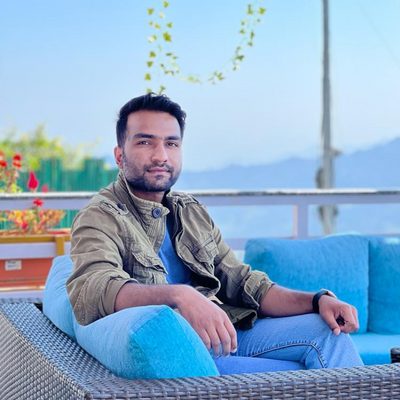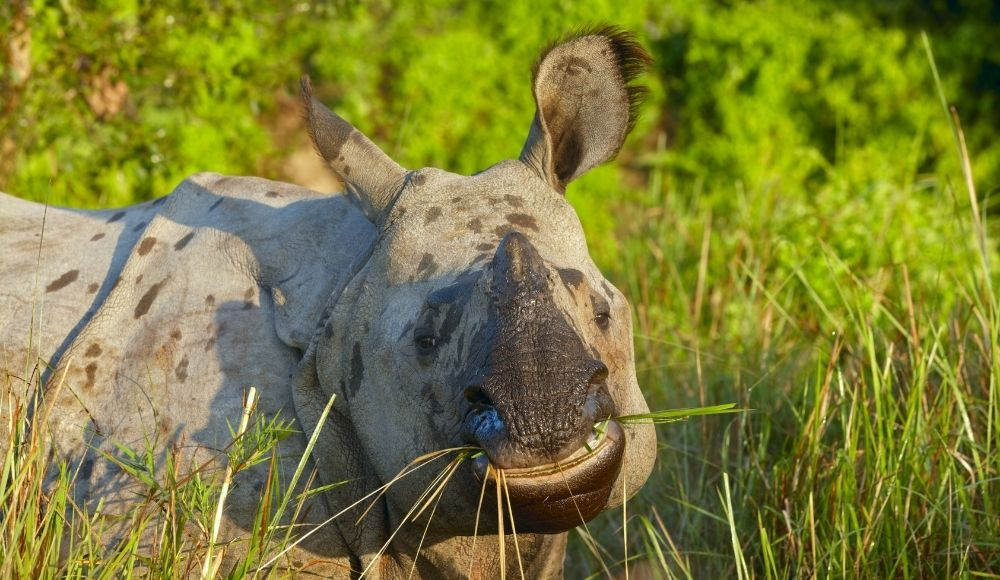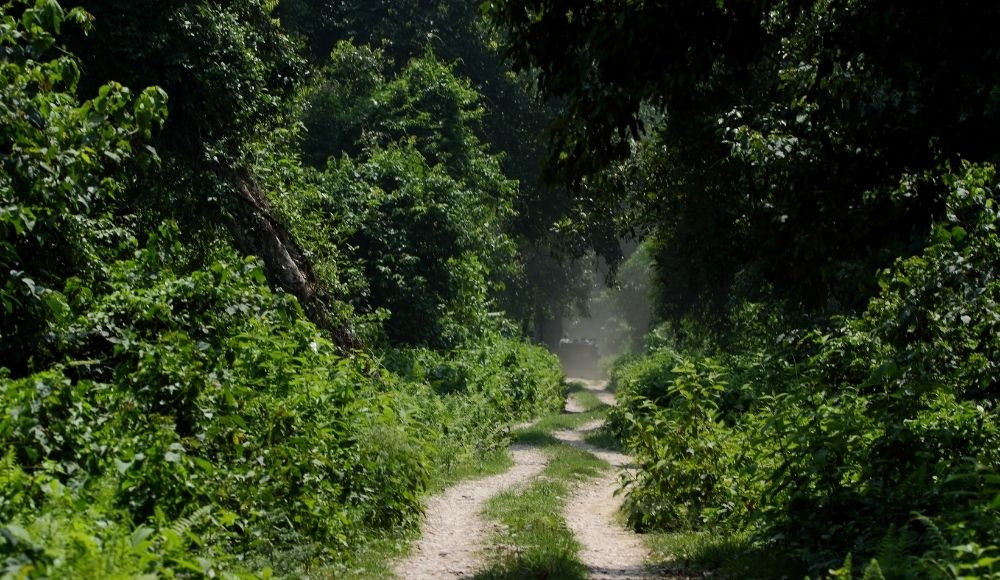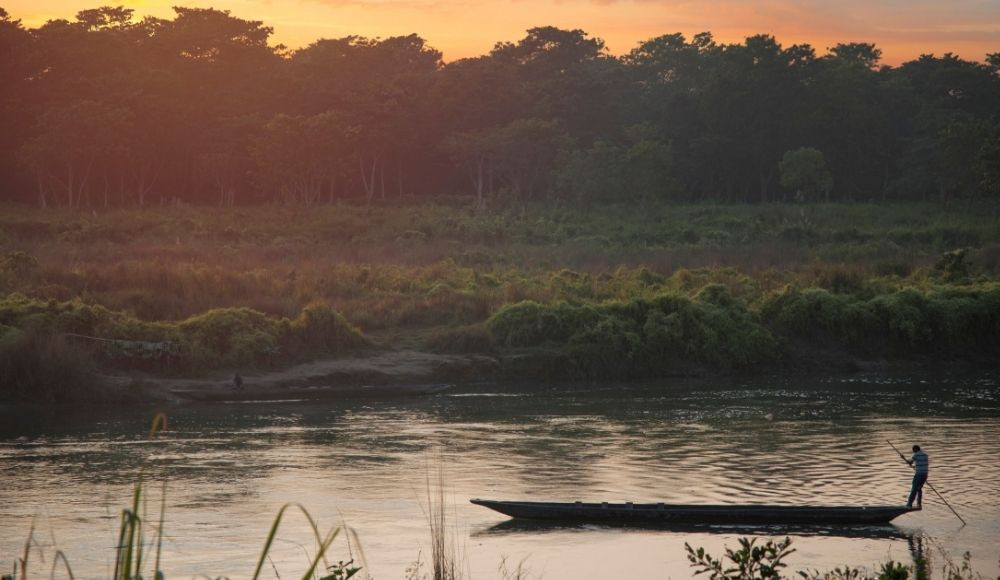Chitwan National Park
If you were to peek into a time stretch, somewhere at the end of the 19th century in Nepal, no less like a time turner, Chitwan national park would still be the favourite hunting ground for Nepal’s ruling class.
If you were to peek into a time stretch, somewhere at the end of the 19th century in Nepal, no less like a time turner, Chitwan national park would still be the favourite hunting ground for Nepal’s ruling class.


If you were to peek into a time stretch, somewhere at the end of the 19th century in Nepal, no less like a time turner, Chitwan national park would still be the favourite hunting ground for Nepal’s ruling class. The heart of the Jungle is the first conservation of Nepal. Feudal hunters shooting tigers, sloth bears, leopards, or rhinoceroses. The Big Jungle game.
However, a lot changed around the 1970s, with the emergence of the Chitwan national park between the beast rivers - Narayani and Rapti. The first-ever of its kind, it stays as a pearl in southern-central Nepal today. It is the best for viewing wildlife in Asia stretched as a sanctuary for adventurers and nature-lovers over 932 sq. kilometres of area.
It is sure to hit even a homophobic on adrenaline once he shoots a one-horned rhino on its move through the binoculars. Or even a majestic Bengal tiger if he’s extremely lucky? No two days will be the same in this World Heritage site.
| Location |
South Central Nepal Districts : Nawalpur, Parsa, Chitwan, Makwanpur |
| Area | 932 Sq. KM |
| Established In | 1973 A.D |
| Enlisted as UNESCO World Heritage Site | 1984 A.D |
| Main Entrances |
Sauraha in East Meghauli Village in West |
| Distance from Kathmandu | 168 KM (105 Miles) |
| Major Wild Species |
One-Horned Rhino Royal Bengal Tiger Asiatic Elephant Gangetic Dolphin Gaur Bison Sloth Bear Black Stork White Stork Sarus Crane Slender Billed Vulture |
The national park is 105 miles from Kathmandu. There are various modes of transportation feasible to get there.
It is a 5-6 hours bus ride from Kathmandu. The best way for the bus ride is to book a tourist bus operated by local companies beforehand. Most of the buses leave around 7 am and take around 9-15 USD per passenger. As for the local buses, they are usually uncomfortable and take longer duration but a cheap travel option.
You can also take a 30 minute flight from Tribhuvan International Airport to Bharatpur Airport which is 17 km far from Sauraha and 27 km from Meghauli. The latter journey can be covered with a local taxi or private transfer with advance reservation. Getting away from the valley of hills and mountains will be very scenic via flights.
Private transfers to Chitwan might take about 5 hours drive from Kathmandu via Prithvi highway on a good day if you are not slowed down by irregular traffics on the way. Even proper air-conditioned private vehicles like cars, vans, jeeps can be arranged separately upon requirements as per the group size. Renting a private vehicle could save your time and offer you a comfortable ride while driving through hills and the river bank.
There is a medley of things that can take up your time here at the park. Be it two days or a full week, there will always be more to look forward to.
The go-to first thing that will appeal to you in the national park is the Jungle walk. It is the best way to delve into the wild and get your eyeballs popping out at the assortment of animals, birds, and reptiles in their natural habitat. The park is home to 700 wildlife species including 68 ones of mammals.
Tracing the snaky path will surely make you feel like a low-key Mowgli for a day rummaging the landscape. Do not forget to take your binoculars with you. Regarding your safety, the experienced guides and naturalists there take you to a safe yet perspicacious distance, good for exploration. They will save you from the bolts from blue.
Back then, meandering the forest on the backs of mighty tuskers was a little less nerve-wracking yet an adventurous option to jungle walks. But due to the growing animal rights concerns with Elephant Safari, a sought-after alternative to it has become the jeep safari with a circuit length of 20 kilometres.

The hoodless jeeps allow the riders to explore the wild for flora and fauna and to get in pace with the humid breeze. Before even a kilometre you will be busy eavesdropping on nature. And if you are worried about disturbing a rhino on your way, that will be too petty to be thinking about.
The animals are accustomed to the engines arriving so will be very less bothered. Still, if you’re inclined to the elephant ride you can have them as your stroll companions through private contractors, if not as your ride.
Chitwan National Park holding 543 species of birds is the perfect destination for bird watchers. It is among the very few known breeding sites of the globally threatened spotted eagle. Here, bird watching is the best on foot. Walking to the melody of cuckoos in spring you could see the spectacular flight of the paradise flycatcher with local guides and conservationists.
Sometimes you could even spot the critically endangered Bengal Florican. Not to miss, 160 other migrating species of birds reach the park in mid-autumn adding up to the beauty of the place and your enjoyment.
There will be no better place than here to see playful elephants bathing in the Rapti River, even better sometime around the sunset. You can take a dip or a dive and have your water-baby evening fulfilled. There are elephant game shows that host some football plays and racing for the tuskers. To enchant you further, there are beauty competitions as well for the giants.
The opportunity to learn about the activities, breeding, or mostly everything about elephants also lies right around the corner. The Elephant Breeding Centre, one among the two that exist in the world was established to protect the endangered elephants. You are not to miss the baby elephant museum on the farm.
You can take a ride to the breeding centre at Khasara, the headquarter of the national park, and view fish-eating gharials ranging from egg to giant one. This centre is not just limited to them but gives you an extra punch with mugger crocodiles and tortoises.
The national park also brings you the canoe ride in hand-carved dugouts. The riverside scenery will be enough appetite to soothe you. But not for long that the very first view of the aquatic creatures will kick you back into gawking at the wonderland.

Mostly you will see crocodiles bubbling out of water that could turn you into a little sceptic for the rest of the ride. After getting yourself heated up amid the jungle, you can take out a few hours of slow-down too, relaxing at the Rapti beach or dam side.
The 20 thousand lakes at Chitwan is known for watching birds, crocodiles, and rhinos and enjoying the serenity of the lakes. Lamo falls on the other side is the sixty meters tall waterfall that will captivate the onlookers’ heart in just a split second. There you can swim or seek a canyoning adventure. On the way, you will encounter Gurung communities and villages also.
The Tharu community there beholds a whole spectrum of art, dances, and traditions. And they being the best in hospitality do not shy away from setting up cultural programs for the visitors. One moment you will be happily blinded by the colourful cultural costumes and in another, you will find yourself dancing remorselessly to a Jhyali.
You can take your time out to visit the Tharu cultural museum as well, you will not be disappointed. You can take an ox-cart or pony ride to their villages. Their simplicity will make you feel at home.
This site is right as rain for spirituals too. You can take a visit to the Valmiki Ashram which is situated inside the park. This pilgrimage is beside the banks of Triveni where Luv and Kush from the Ramayana are said to have taken birth. The Bikram baba is a small temple in the park that is mainly worshipped by childless couples to grant them parenthood. The ethnic groups believe in the wish-granting powers of the temple.
Related Article: Chitwan Wildlife Safari Luxury Tour
The most popular itinerary is 2 nights 3 days, during that time period one can complete some of the major activities inside Chitwan national park. But a 3 night 4 days trip could offer you an additional exploration of Nepal’s first national park. Find out the day-wise tour itinerary for your reference:
Day 1: Checked-in in Chitwan, visit for a village walk.
Day 2: A full day Jungle activities like Elephant Safari or Jeep Safari, Canoe Ride, and Elephant Breeding Center visit at Sauraha. During the activity break, you will return to your hotel for lunch.
Day 3: Visit for Bird watching, Have your breakfast and checked-out from Chitwan.
Day 1: Checked-in in Chitwan, the sunset view from Rapti river bank.
Day 2: A full day Jungle activities like Elephant Safari or Jeep Safari, Canoe Ride, and Elephant Breeding Center visit at Sauraha. During the activity break, you will return to your hotel for lunch.
Day 3: Have your breakfast at the hotel and you can go for a village walk. After lunch, you will go to visit Bis Hajari Tal in Chitwan. The jungle walk is a wonderful experience in Bishajari Lake.
Day 4: Visit for Bird watching, Have your breakfast and checked-out from Chitwan.
Get in touch with our experts right away and finalize an experience!
About UsSauraha and Meghauli are two popular points where most visitors stay. Several hotels and resorts are available within these two areas which offer a combined service of accommodation, meals and activities. Sauraha is on the opposite side of the Rapti River and a frequent place for most visitors. Budgeted and luxury accommodations are available in Sauraha but in Meghauli it's difficult to get mid-range hotels/resorts.
There are local Tharu home-stays and riverfront resorts. Sometimes you could even spot a rhino crossing the river from the resort balcony. There are luxurious jungle lodges and camps as well to hit the sack. They can provide you both vegetarian and non-vegetarian delicious meals.
Chitwan has a tropical monsoon climate with high humidity throughout the year. Spring and Autumn are the best seasons to visit Chitwan. The seasons unfold mainly as:
The months of March to May are when the temperatures are slightly high in the spring season in Chitwan. It can progressively rise to a maximum of around 33-35 degrees Celsius. Due to the excessive breeding of mosquitoes during this time, things become more uncomfortable. The sweltering season makes activities pretty tedious. Humidity is very low.
Monsoon is the summer season in Chitwan. Though the park is open all round the year, late June till September will be a difficult trip for the visitors because of the arrival of the monsoon. The roads will be muddier and there are chances of floods. So it is best to take a rain check at this time of the year. There are even chances of lightning and high winds. The maximum rainfall can vary from 50-53 centimeters.
Autumn is the best time to visit Chitwan National Park. It is around September to November when the skies are clear and the temperature is around a comfortable 25 degrees Celsius at most. However, even better for watching animals.
Winter falls from the month of December to February. It’s not considered a good time to visit Chitwan National Park for a wildlife experience. January remains the coldest month of the year in Chitwan. The temperatures can drop up to 7-8 degrees Celsius.
You will need an Entry permit for all the time you will spend inside the national park including the 20 Hazari lakes and the buffer zone. The entry fees to be paid at the main entrance gate of the park are:
| For Foreigners | NRs.1500 per visitor |
| For SAARC Nationals | NRs.750 per visitor |
| For Nepalese | NRs.100 per visitor |
However, the fee is not required for visiting the elephant breeding centre.
DO’s
DON’Ts
Finally, no other place will you find elephants and rhinos rocking the streets or animals coming around giving you a hair-raising greeting straight from breakfast. For the humid climate, there will be enough chills that the adventure shall give you to keep you in a good space. So, it’s most definitely worth visiting and staying.
Related Article: Bardia Wildlife Safari Luxury Tour